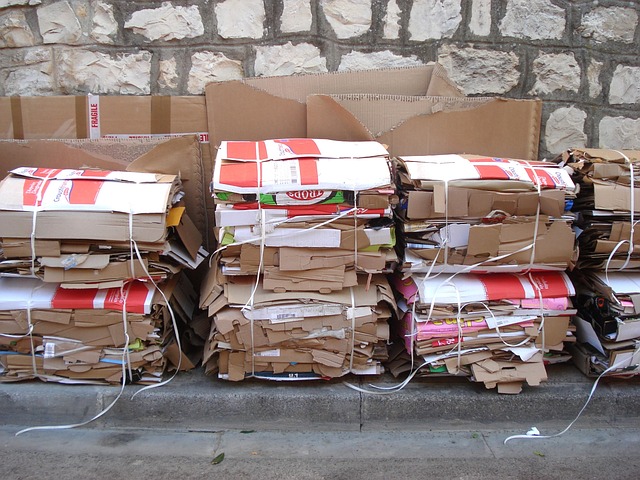Maximize Electronics Recycling Manhattan: Tips for Sustainable Disposal
Manhattan's tech culture generates significant e-waste, underscoring the need for responsible management. The city addresses this through various…….
Welcome to an in-depth exploration of a vital practice that is reshaping the way we handle our electronic waste—Electronics Recycling Manhattan. This article aims to unravel the complexities of this process, its global impact, and its role in fostering a sustainable future. By delving into various aspects, from technological advancements to policy frameworks, we will uncover the significance of responsible electronics recycling in one of the world’s most bustling cities.
Definition:
Electronics Recycling Manhattan is the process of collecting, sorting, and processing end-of-life electronic devices (e-waste) to extract valuable materials, reduce environmental impact, and promote sustainable practices. It involves a complex chain of events, from consumer drop-off points to recycling facilities, where specialized equipment and techniques are employed to dismantle and recycle various electronic components.
Core Components:
Historical Context:
The concept of electronics recycling gained momentum in the late 20th century as the rapid growth of electronic devices led to increasing e-waste generation. Manhattan, with its dense population and vibrant technology sector, has been at the forefront of this movement, pioneering innovative recycling methods to keep pace with the city’s unique challenges.
International Influence:
Electronics Recycling Manhattan is not just a local initiative but a global phenomenon. The City of New York, through its rigorous e-waste management programs, has set a benchmark for other metropolitan areas worldwide. International organizations and governments are increasingly adopting similar strategies to tackle the growing e-waste crisis.
Key Global Trends:
Regional Disparities:
While some countries have made significant strides in electronics recycling, disparities exist. Developing nations often struggle with inadequate infrastructure and regulations, leading to illegal dumping of e-waste. This underscores the need for global cooperation and standardized practices to address this complex issue.
Market Dynamics:
The Manhattan electronics recycling industry operates within a dynamic market characterized by fluctuating prices for raw materials recovered from e-waste. Metals like gold, silver, and copper are highly sought after, driving demand and influencing recycling strategies. Market volatility can impact the financial viability of recycling operations.
Investment Patterns:
Private investments in advanced recycling technologies and infrastructure have been steady, fueled by growing environmental concerns and government incentives. Venture capital firms and technology investors see potential for significant returns while contributing to a greener economy.
Economic Impact:
Innovations in Recycling Technologies:
Digitalization and IoT Integration:
The Internet of Things (IoT) is revolutionizing electronics recycling by enabling smart tracking and monitoring of devices throughout their lifecycle. This technology allows for better inventory management, predictive maintenance, and enhanced security during the recycling process.
Future Potential:
Emerging technologies like blockchain could further streamline transactions and ensure transparency in the global e-waste supply chain. 3D printing offers possibilities for recycling specific components while creating new products, fostering a more circular economy.
Governing Frameworks:
Policy Implications:
Main Hurdles:
Criticisms and Solutions:
Case Study 1: Manhattan’s E-Waste Drop-Off Program
Manhattan implemented a comprehensive e-waste drop-off program, setting up numerous collection points across the city. This initiative achieved remarkable success, diverting tons of e-waste from landfills. The collected materials were recycled, generating revenue for local community projects, showcasing how recycling can benefit society as a whole.
Case Study 2: Tech Giant’s Responsible Retirement Program
A leading technology company collaborated with Manhattan’s recycling facilities to offer consumers a convenient way to retire their old devices. This program included secure data wiping and responsible recycling, ensuring consumer trust while reducing e-waste from product obsolescence.
Lessons Learned:
Emerging Trends:
Strategic Considerations:
Electronics Recycling Manhattan represents a holistic effort to tackle one of the most pressing environmental challenges of our time—e-waste management. Through meticulous processes, technological innovations, and thoughtful policies, this practice is transforming the way we interact with electronic devices. As the world navigates an increasingly digital future, responsible recycling will be a cornerstone of sustainable development, ensuring that technology serves humanity without leaving a detrimental environmental footprint.
Q: Why is electronics recycling important?
A: Electronics recycling is crucial because it prevents hazardous substances from entering landfills and reduces the demand for virgin resources. It also helps recover valuable materials, contributing to a more sustainable economy.
Q: How does Manhattan’s e-waste recycling program benefit residents?
A: The program provides convenient drop-off points for residents, ensuring responsible disposal of old electronics. Revenue generated from recycled materials often funds local community projects, creating a positive environmental and social impact.
Q: What are some common materials recovered from e-waste?
A: Common materials include metals like gold, silver, copper, aluminum, and rare earth elements, as well as plastics and glass. These materials have various applications in manufacturing new products.
Q: Can I recycle any electronic device, no matter how old or damaged?
A: Most facilities accept a wide range of devices, but the capacity to recycle them varies. Damaged devices may require specialized handling. It’s best to check with your local recycling center for specific guidelines.
Q: How does illegal e-waste dumping impact legitimate recycling efforts?
A: Illegal dumping undermines the effectiveness of recycling programs by devaluing materials and creating safety hazards. It also perpetuates environmental and health risks, especially in communities with limited resources.

Manhattan's tech culture generates significant e-waste, underscoring the need for responsible management. The city addresses this through various…….

In Manhattan, rapid technological advancements and dense populations lead to significant electronic waste (e-waste) generation. Embracing sustainable…….